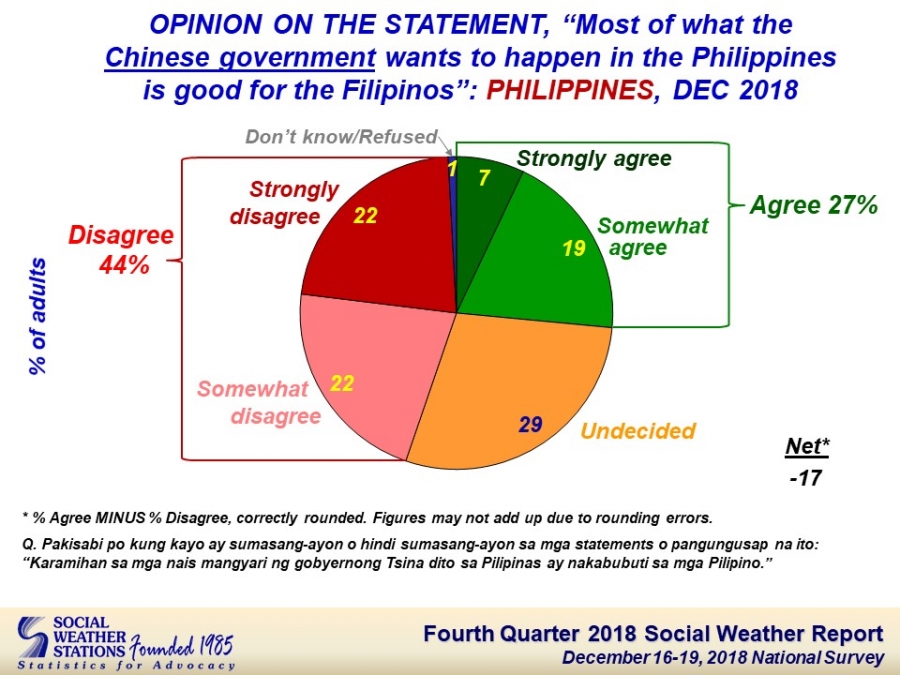44% of Pinoys doubt China’s intentions for PH
Credit to Author: lalos| Date: Sat, 06 Apr 2019 23:15:58 +0000
MANILA, Philippines — Two in five Filipinos disagree that the Chinese government has good intentions for the Filipino people, a new Social Weather Stations (SWS) survey found amid a string of issues concerning China, the latest involving the presence of hundreds of Chinese vessels near the Philippine-occupied Pag-asa island.
Results of the survey, conducted from Dec. 16 to 19 last year, showed 44 percent of the 1,440 adult respondents disagreed with the statement “most of what the Chinese government wants to happen in the Philippines is good for the Filipinos” while 27 percent agreed. The remaining 29 percent were undecided.
Diplomatic protest
This resulted in a -17 net agreement score (percent agree minus disagree), classified by SWS as “moderately weak,” and an improvement from -28 in September 1993, when SWS last asked the question about the intentions of China.
The survey, released late Friday, had a margin of error of plus or minus 2.6 percentage points.
The Department of Foreign Affairs said it had lodged a diplomatic protest with Beijing against the Chinese ships around Pag-asa which, according to the military’s monitoring, numbered more than 200 vessels since January.
Earlier this year, concerns have been raised about the influx of illegal Chinese workers in the country. Still, the Duterte administration has pivoted to China for loans and grants to finance his ambitious infrastructure program.
Friendlier stance
President Duterte has taken a friendlier stance toward China, even setting aside a Permanent Court of Arbitration ruling in favor of the Philippines which challenged China’s claim to nearly all of the South China Sea, including waters within the Philippines’ exclusive economic zone.
While net agreement eased between September 1993 and December 2018, the number of people who strongly disagreed with the statement rose, SWS noted.
Responses were broken into strongly agreed/disagreed and those who somewhat agreed/disagreed.
Those who disagreed comprised of 22 percent who strongly disagreed, up 17 points from 5 percent in 1993, and 22 percent who somewhat disagreed, down from 39 percent.
Those who agreed consisted of 7 percent who strongly agreed, up from 1 percent in 1993, and 19 percent who somewhat agreed (rounded correctly), a declined from 35 percent.
SWS first asked the question in July 1985 to gauge public opinion about the intentions of the US government, a longtime ally of the Philippines. —Inquirer Research

